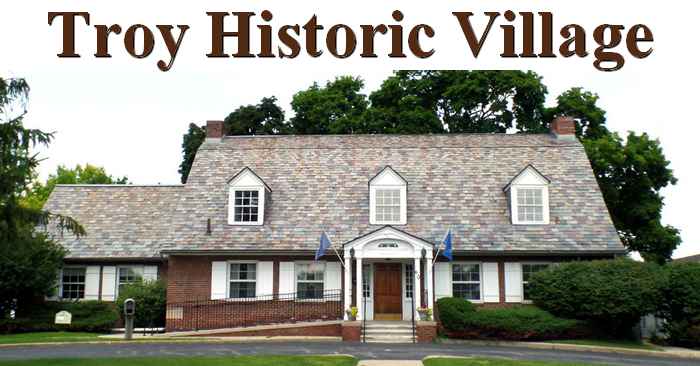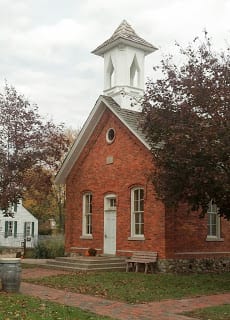Today I would like to introduce everyone to the Troy Historical Village, located in Troy, Michigan at the corner of Wattles Road and Livernois Road. I don’t know how many times I’ve driven by that corner and I’ve never noticed this gem of a museum. This village contains 10 buildings that give a glimpse into this region’s past.


Another building of note is the Poppleton School, which was built in 1877 near the northwest corner of Big Beaver and Crooks Road. Inside, visitors are able to see what it was like to attend a one-room school in the 1800s by being able to sit in the desks and peruse old schoolbooks. After sitting through a 30 minute demonstration on what a school day might resemble, I have to say that if you ever have a child who says they hate school and it’s so unfair, take them to the Troy Historical Village and have them sit through the presentation. They’ll get a feel for how different it was back in the 1800s and how good they really have it now. *grin*
These are just two of the buildings I was able to spend time in during my visit to the Troy Historical Village, but there are still quite a few more people are allowed to go into. Those buildings include:
- The Caswell House, which was built in 1832 near the intersection of Big Beaver and Adams Roads.
- A General Store, which was reconstructed to represent the original general store at Troy Corners (the intersection of Livernois and Square Lake Road) built in 1832.
- A Village Print Shop, which showcases what an 1880s photography shop would look like and includes various types of cases, tools, and presses. Also found there is an 1890 Chandler & Price and a 1910 Golding Jobber, hand-fed letterpress machines that can print 500-1,000 copies per hour.
- The Wagon Store that was built in 1872 at Troy Corners.
- The Parsonage, which was built circa 1878 by the congregation of the Troy Methodist Church and served as a home for over 25 ministers and their families.
- The Old Troy Church, which was built in 1837 at Troy Corners and conveyed to the Methodist Episcopal community in 1862.
- Troy Town Hall, which was originally built as the Troy Union School around 1864, but was restored to represent Troy’s first Township Hall.
The Troy Historical Village can be comparable to Greenfield Village as far as historical significance is concerned (especially to our area); but it is quite a bit different in size and can easily be done in an afternoon, whereas it can be hard to see everything at Greenfield Village in a day.
Jackie is a stay at home mom to two adventure loving boys; a wife to a husband who is very tolerant of her reading addiction; and the owner of Literary Escapism where she has actively promoted books since 2006. Since introducing her boys to the world of superheroes and Doctor Who, she has realized that she is a bigger geek than she knew. She loves exploring and finding new adventures to take her boys on, and it turns out they love checking out the unknown as well.








